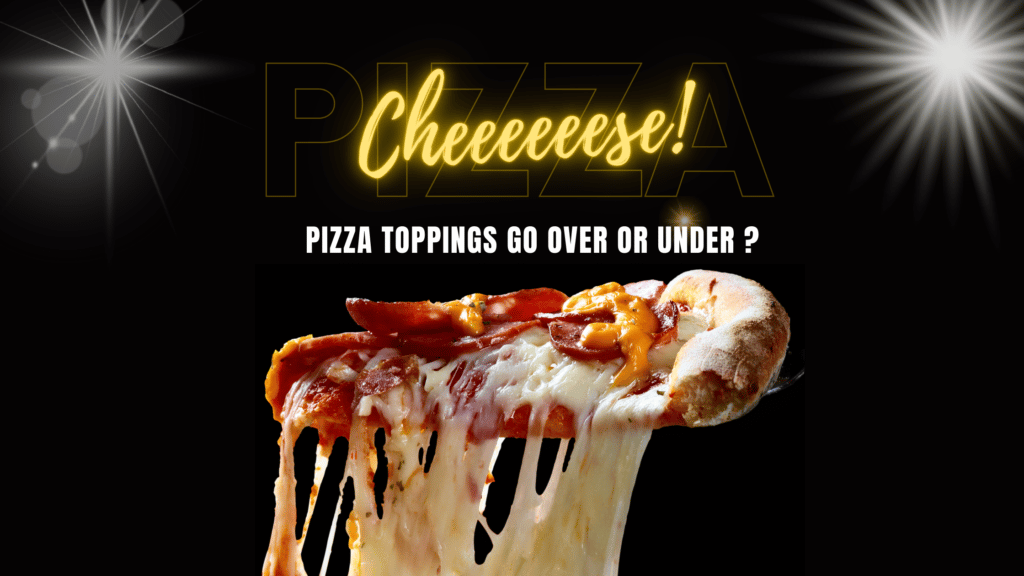Is Pizza Cheese on Top or Bottom?
Hey pizza lovers, are you wondering if you should layer pizza toppings under or over cheese?
In traditional pizza making, the cheese is typically spread on top of the sauce but beneath other toppings, creating a melty layer that helps hold everything together.
However, pizza toppings that can burn easily should go under the cheese, while toppings that resist the pizza oven’s high temperature should go over the cheese. Also, having the toppings over the cheese makes the pizza more visually appealing than burying it under the cheese.
So, let’s explore which toppings should go under the cheese and which should go over the cheese for the perfect pizza!
Let’s get started!
Here’s What You Will Find:
Key Takeaways
Pizza Toppings Under Cheese or Over?
Cheese placement affects taste and texture: Placing cheese on top of the sauce and under the toppings creates a barrier to prevent sogginess and allows the cheese to meld with the toppings for a harmonious flavor.
Vegetable toppings benefit from being under the cheese: This helps to keep the vegetables moist, prevents them from drying out or burning, and maintains their flavor and texture.
Meat toppings are better placed over the cheese: This allows the meat to cook and crisp up, releasing flavorful juices into the cheese layer and creating a delightful contrast between the succulent meat and gooey cheese.
Experiment with different pizza styles and preferences: The ultimate decision on cheese and pizza topping placement depends on your taste and your pizza style. Don’t be afraid to experiment and find your favorite combination!
Do You Like Your Pizza Toppings Under Cheese or Over?
Generally, if you like your pizzas topped with vegetables, they should go under the cheese. On the other hand, if you add meats to your pizzas, it should go over the cheese.
Placing toppings can significantly impact a pizza’s overall taste and texture. When it comes to vegetable toppings, it is recommended that they be placed under the cheese. The cheese acts as a protective layer, helping to keep the vegetables moist and prevent them from drying out or burning during the baking process. In addition, this can help maintain the integrity of the vegetable’s flavor and texture.
On the other hand, if you prefer meat toppings, placing them over the cheese is ideal. This positioning allows the meat to cook and crisp up, releasing its flavorful juices into the cheese layer. It also helps to create a delightful contrast between the succulent meat and the gooey, melted cheese, resulting in a delicious and well-balanced pizza experience.
Pizza Cheese on Top or Bottom?
When it comes to pizza, the placement of cheese can actually affect the overall taste and texture.
In traditional pizza making, the cheese is typically spread on top of the sauce but beneath other toppings, creating a melty layer that helps hold everything together. This is known as the classic pizza structure and has been popularized by many pizza styles such as New York, Neapolitan, and Chicago thin crust.
The primary reason for placing cheese on top of the sauce is to create a barrier that prevents the toppings from making the crust soggy. Additionally, it allows the cheese to melt and meld with the toppings, creating a delicious medley of flavors.

However, there are some exceptions, like the famous Chicago deep-dish pizza. In this case, the cheese is placed directly on the crust, followed by the toppings, and then the pizza sauce is poured on top. This structure helps to prevent the crust from becoming soggy in the thick, hearty pizza.
Ultimately, the choice of cheese placement depends on personal preference and the style of pizza you’re making. I recommend experimenting with different pizza styles to find your favorite!
How to Layer Toppings on a Pizza
Adding toppings to a pizza depends on the type of toppings you use. Pizzas with toppings on top tend to bake faster than those without.
In general, the tomato sauce goes on top of the pizza dough, then the cheese and toppings follow, but this is not always true.
Many regional styles of pizza are made differently.
For example, in Italy, the tomato sauce is applied first, followed by the toppings. This order makes it easier to spread the sauce.
However, the deep-dish pizzas are an entirely different story in Chicago.
The Chicago-style pizza or deep dish pizza is when the mozzarella slices go on top of the dough. Beneath the sauce, the cheese slices enhance the final product’s deliciousness while protecting it from becoming a soggy mess when baking pizzas.
The best time to put the toppings on a pizza depends on the type of cheese.
Meats on top of the cheese will get baked faster than those without. Depending on the pizza topping, you can put the meat on top of a pizza or add it to it before baking it.
Check the chart below for more on the best order of toppings for different pizzas.
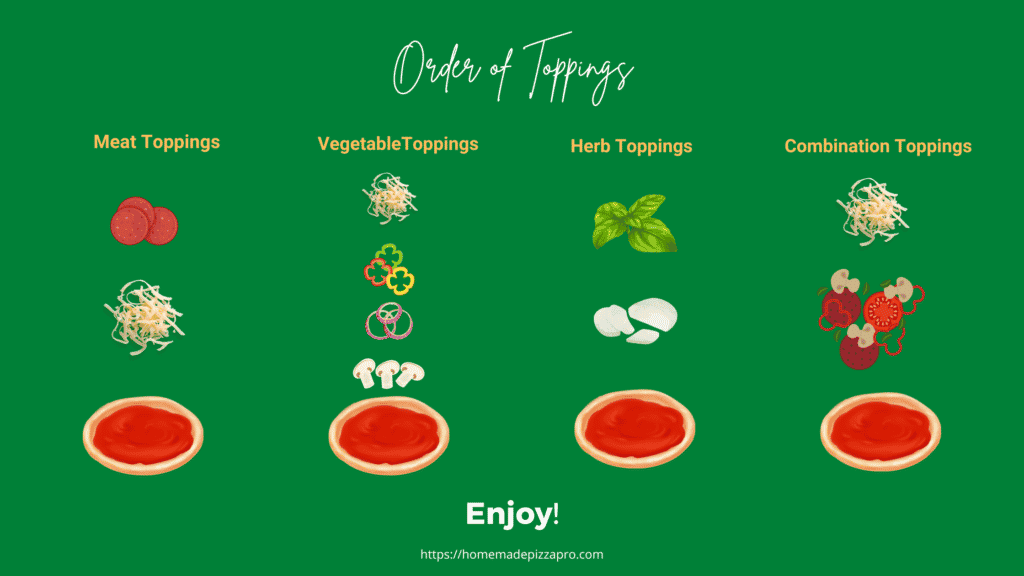
Vegetable Toppings
Generally, you should pre-cook vegetables when using them because the last thing you want is a soggy pizza.
Adding toppings to a homemade pizza depends on what you like to eat.
Although vegetables are mostly water, they can flavor the pizza and become a soggy mess if not treated correctly. Generally, vegetable toppings should be placed underneath the cheese.
Although certain vegetables contain more water than others, most vegetables are water. Much of the moisture in the vegetable toppings evaporates when you pile them onto the cheese and bake the pizzas at a high temperature.
All the moisture generated when vegetables are layered beneath a layer of cheese and baked at a high temperature gets retained between the cheese and the sauce.
When you cut the pizza, all that moisture is suddenly released into the pizza crust, giving it a soggy bottom, particularly in a thin-crust pizza. The crust’s flavor and texture have practically been watered down by the excessive wetness, making consuming less pleasurable.
If you like potatoes on your pizza, remember that pre-cooking root vegetables is a must. Precooking potatoes in olive oil is a great choice and will make your pizza tastier. You should cut your root vegetables into cubes and roast them before placing them on your pizza. You can also cook them in an air fryer. Slice them very thin and place them under the cheese when pre-cooking root vegetables.
Using canned vegetables, like carrots or black olives, completely drain all liquid from the can before you cook the pizza.
Mushrooms
For example, two factors should be considered when putting fresh mushrooms on a pizza. While heated to a high temperature, a very thinly sliced mushroom placed on top of the cheese can quickly dry up, turning it into tasteless cardboard.
The fresh mushrooms should be buried under the cheese long enough to protect the thinly sliced mushrooms from high heat while cooking them just enough.
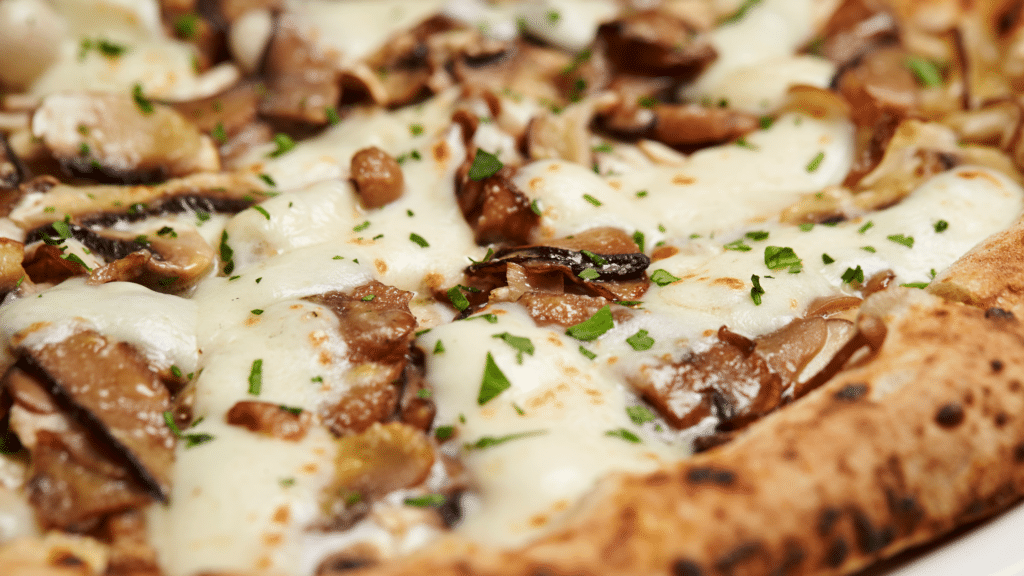
If the idea of buried mushrooms bothers you, try drizzling the sliced mushrooms with olive oil before placing them on top of the cheese. Fresh mushrooms are often cut into thicker slices, and canned mushrooms will survive the heat without any problems.
This way, they will not overcook and lose their flavor. Another tip is to put your pizza toppings under the cheese if you don’t like meat.
Placing toppings on homemade pizzas depends on what you want to put on top. If you add fresh spinach to your pizza, you can precook it to prevent it from wilting.
Onions
Onions are best for a topping when sliced thinly. Onions will dry out during cooking and should be placed under the cheese.
Vegetables also get sweeter and soft when you cook them.
Tomatoes
Another option is adding tomato slices. Tomatoes add thickness to your pizza, flavor the pizza sauce, and provide color and texture.
To add thickness, you can use tomato paste. If you’re unsure about the taste, experiment with a small amount first. Tinned tomatoes typically contain water, so drain the extra liquid before using them.
Another good option is cornstarch. You can use a teaspoon to make your pizza sauce thicker.
Tomato sauce can be made using extra virgin olive oil, butter, or flour. Add a pinch of salt and stir until combined. For a thicker sauce, use bread crumbs.
Bread crumbs are spongy and absorb excess water from tomato juice. They also do not affect the taste of your pizza.
However, baking soda is more suitable because it neutralizes tomato sauce’s acidity and alkalizes your pizza.
Diced tomatoes are a good option if you don’t have time to peel the tomatoes. You can also make a puree with the seedy tomato pulp.
You can cook it in a pot until it reaches the desired consistency. You can also use passata, a pureed tomato that’s been strained. It is a thicker form of tomato. In the US, it’s called tomato puree.
Meat Toppings
Generally, meat toppings should go on top of the cheese.
If you like meat, you should add it. However, if you are unsure what goes on top of the cheese, remember to cook the toppings first.
Generally, raw meat should not be used as a topping, as it will not have enough time to cook before the rest of the pizza cooks.
Pepperoni
Is pepperoni on top or under the cheese?
When fresh or dry-cured pepperoni is baked beneath layers of cheese, the flavor is comparable to that of the product as it comes out of the package.
However, pepperoni crisps up, and the edges curl when you put the same pepperoni on top of layers of cheese and bake it in a pizza oven at a high temperature.
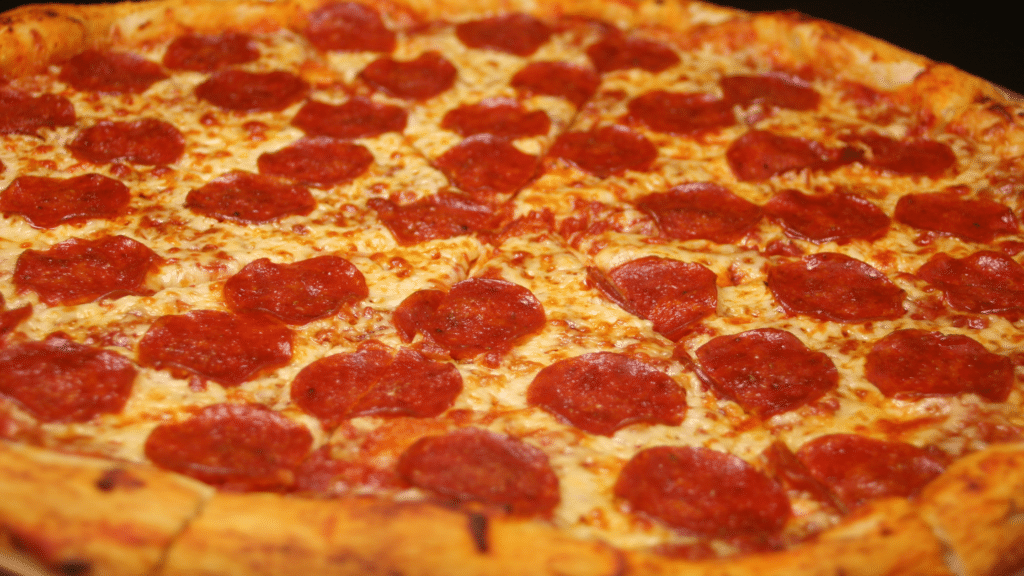
These fatty meats have enough oils and durability to withstand a hot oven. If you put the meats below the cheese, the fat is going to render out and be trapped under the cheese, which adds even more grease and liquid to the pizza, so fatty meats should go on top
It emphasizes the subtle smokiness and highlights the traces of pepper in the meat when you spread it over the cheese in the high-temperature pizza oven.
After baking the pizza in a pizza oven, the pepperoni becomes crispy, giving your bite of crispy pizza a delicious crunch.
The identical pizzas will bake, taste, and feel drastically different if the pepperoni is positioned beneath the cheese.
Herbs and Green Toppings
Generally, herbs and green toppings should be placed underneath the cheese or after the pizza is cooked.
However, if you add baby spinach, fresh basil, or another delicate leafy green, the leaves will not withstand a hot pizza oven and may turn mushy when cooked.
If you’re using fresh spinach, place them under the cheese or after the pizza is cooked.
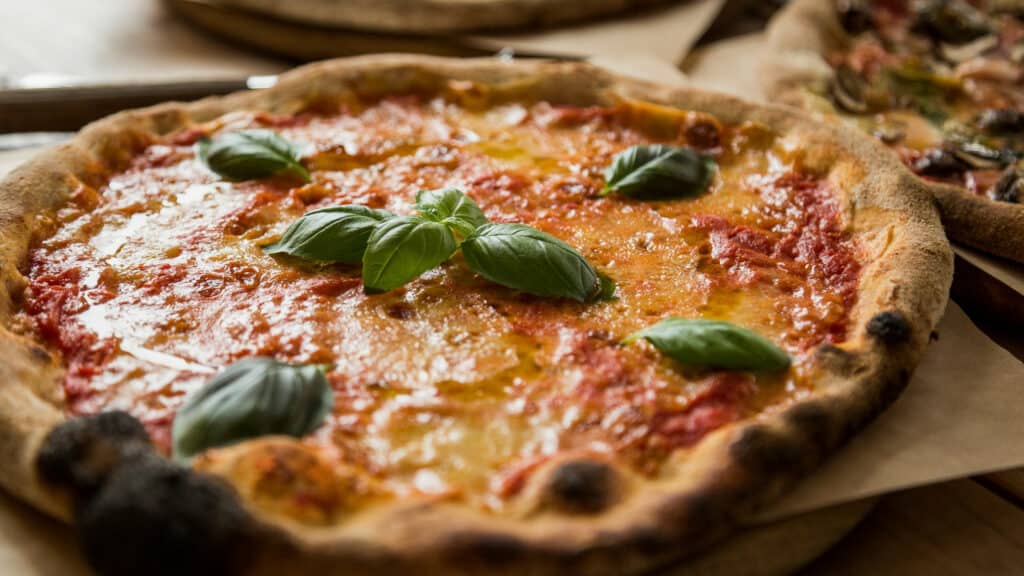
The order of toppings on a pizza can vary greatly depending on your personal preference, what you make, and where you’re making it.
Having the cheese on top may cause you to overcook it. The cheese will curdle and become less pungent, making it difficult to cut and ruining the appearance of the toppings.
Furthermore, baking the pizza dough before placing the toppings will save time.
Consequently, they are the perfect topping for a delicious pizza. You can also use the vegetables that you like and put them on top of the pizza.
You can layer the vegetables on top of the pizza for a more flavorful dish.
Fresh Mozzarella
Fresh mozzarella should go last on your list; it should be the cheese on top of your pizza. It has a lot of moisture, which may make your pizza crust soggy.
The Last Slice
We hope you have learned to layer pizza toppings under or over the cheese.
When layering and baking pizza, experiment with the toppings. Put cheese on the top and bottom and check the difference.
Get inspired by flavors and textures, and experiment with each component’s layers, flavors, and textures until you are confident that what you have produced is a great pizza. Remember, making pizza is a culinary art.
We can honestly say it doesn’t get much better.
Additional Resources on Pizza Toppings

Weirdest Pizza Toppings: Exploring the World One Slice at a Time
the PROs
Check Out Our 60+ Weird Toppings List Have you ever pondered what might be the weirdest pizza toppings ever to …
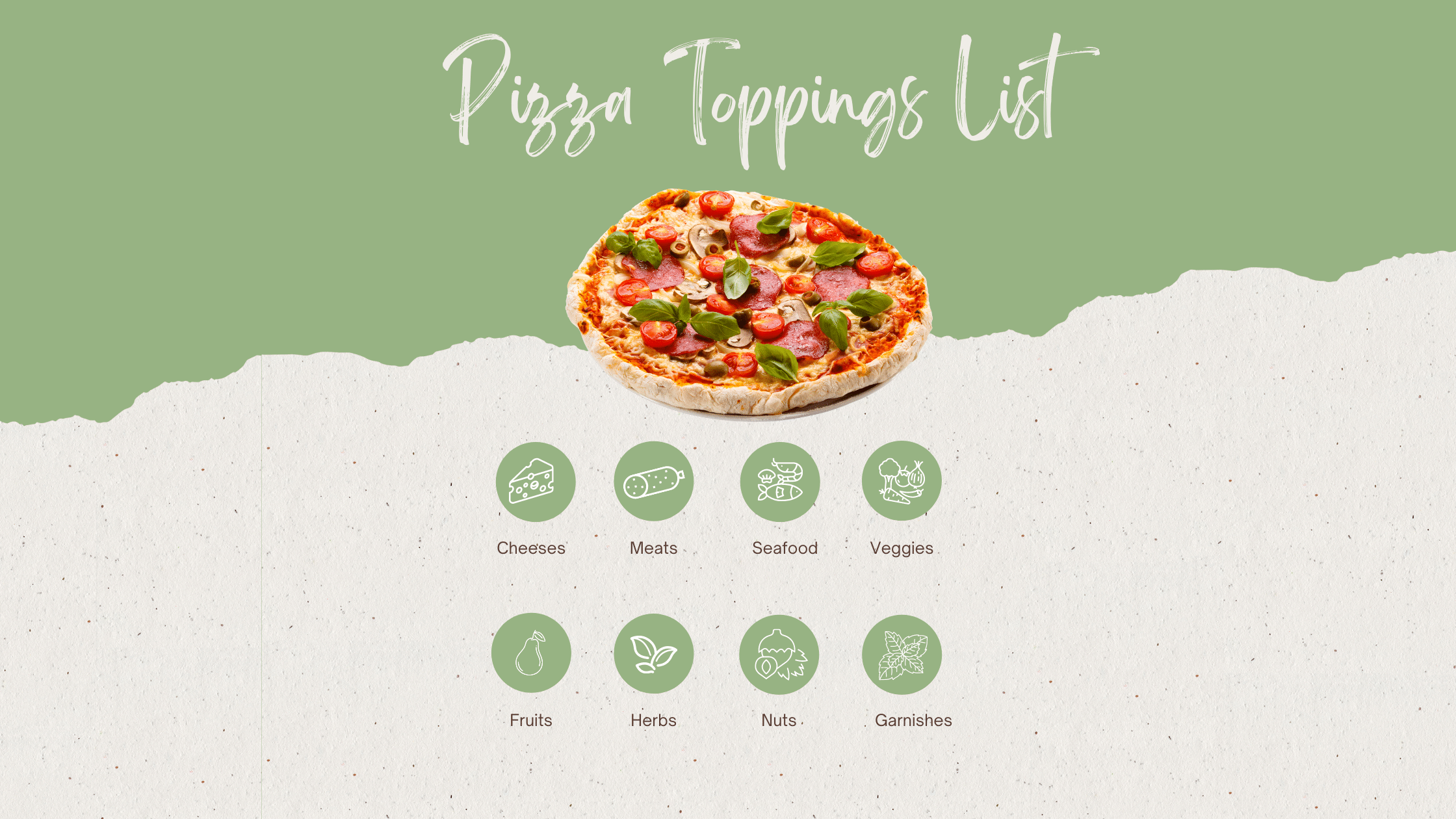
Ultimate Pizza Toppings List (The Best of 2023)
the PROs
Plus: A Creative Tool to Make Your Own Pizza Topping Combination Best Pizza Toppings List Are you looking for the …
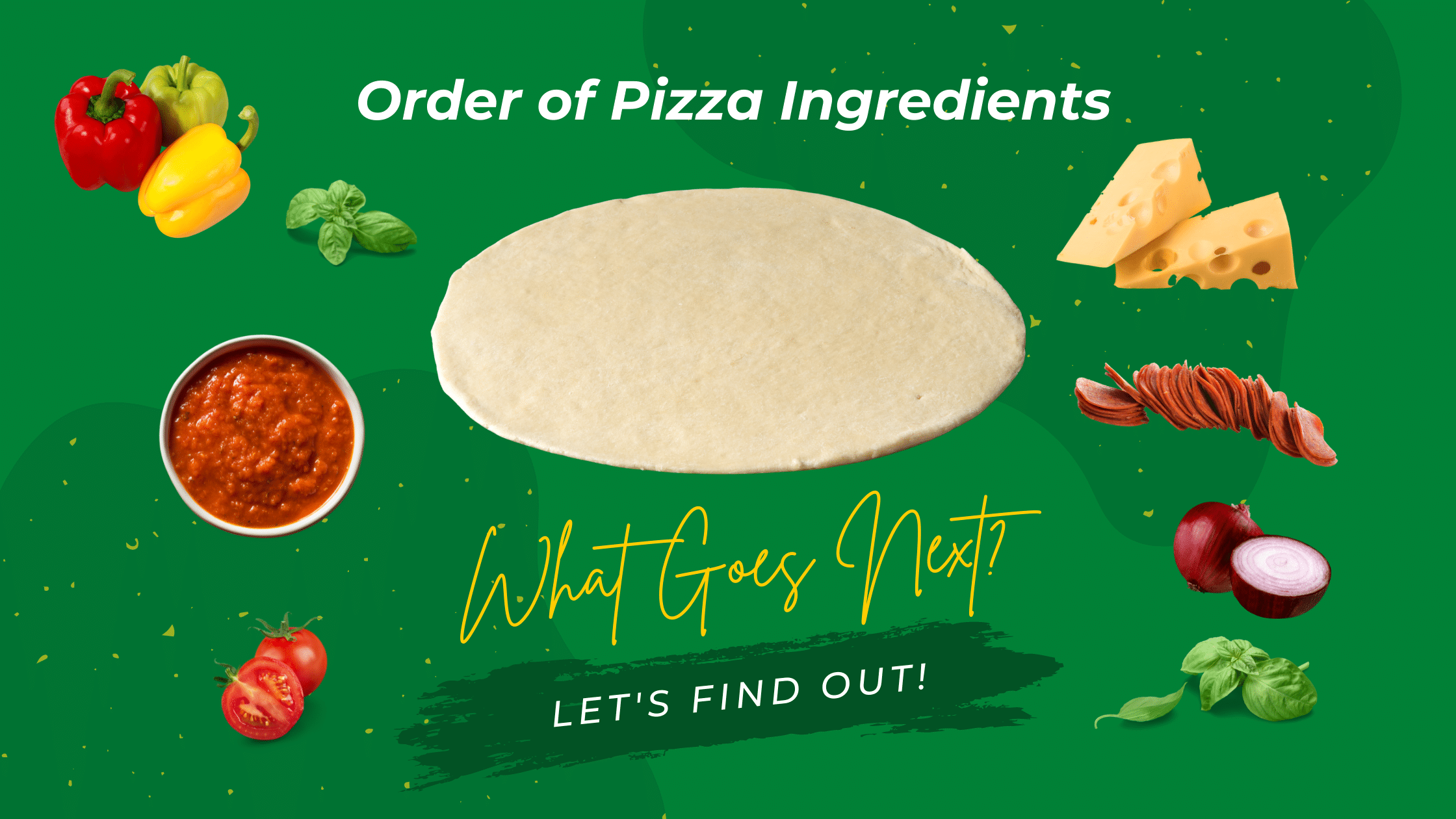
Here’s the Perfect Order of Pizza Ingredients [Step Process]
the PROs
What is the Order of Pizza Ingredients? Order of Pizza Toppings Are you wondering what is the correct order of …
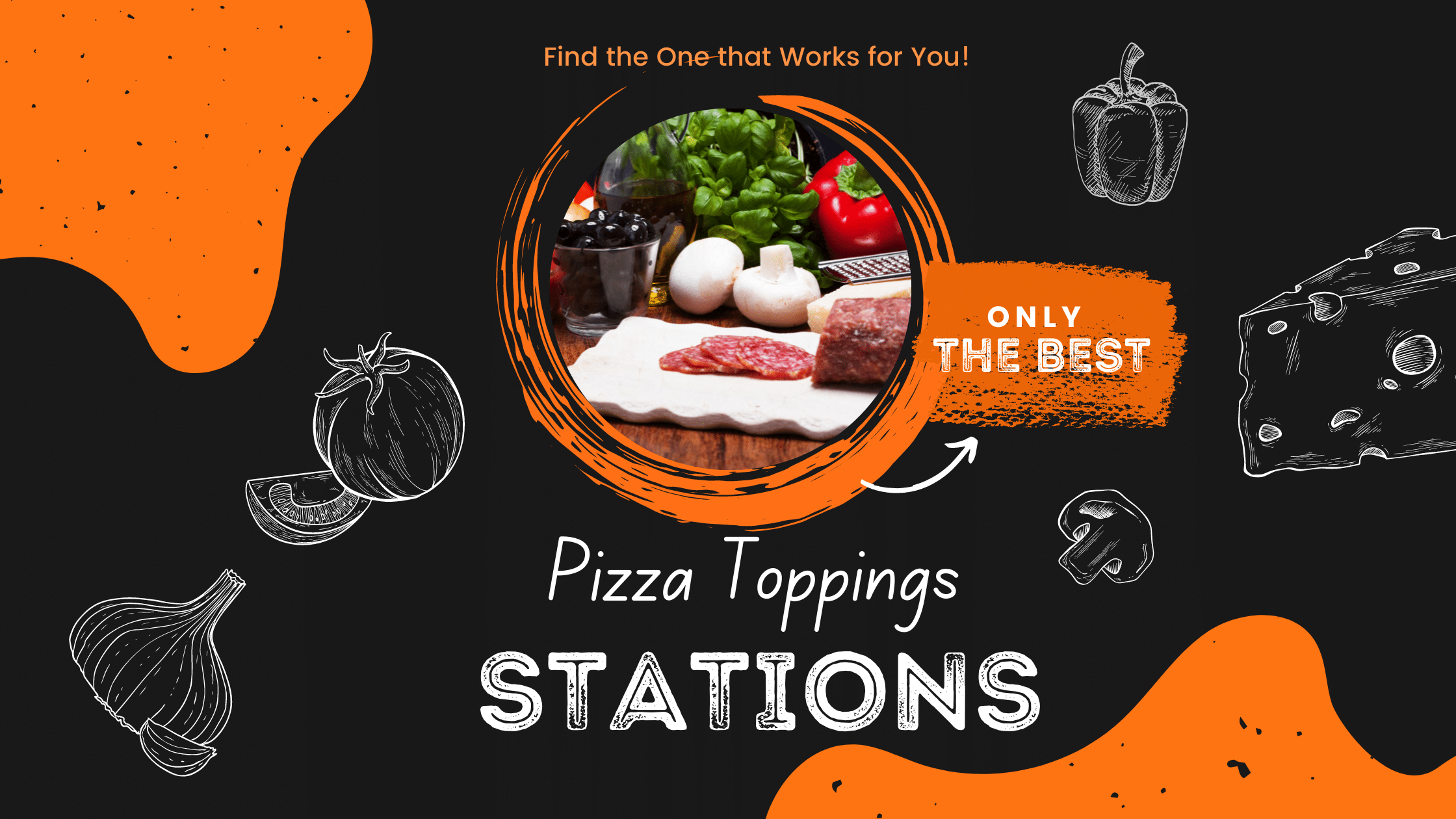
Take Your Pizza Parties to the Next Level with These Pizza Topping Stations
the PROs
Pizza Toppings Stations Ideas Are you looking for pizza toppings stations? You know how messy it can be if you …
Enjoy!
Not a PRO? Not a Problem!
Take a pizza class to bring your pizza skills to the next level,
so you can be a PRO!
Related Posts
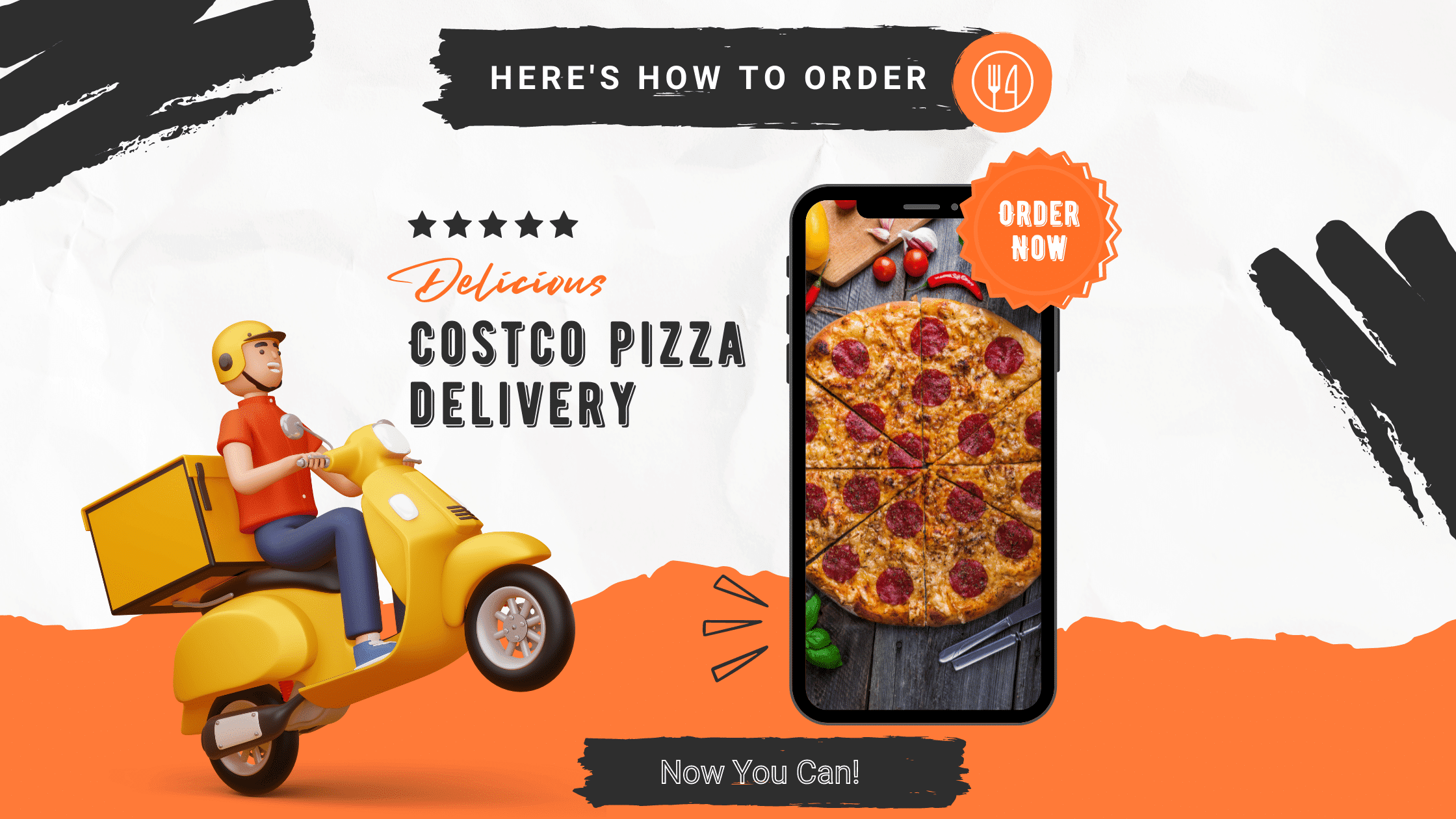
Costco Pizza Delivery: Find How You Can Get It Now!
the PROs
People go to Costco’s food court for many different reasons, but the cheesy slice of pizza they serve is among …
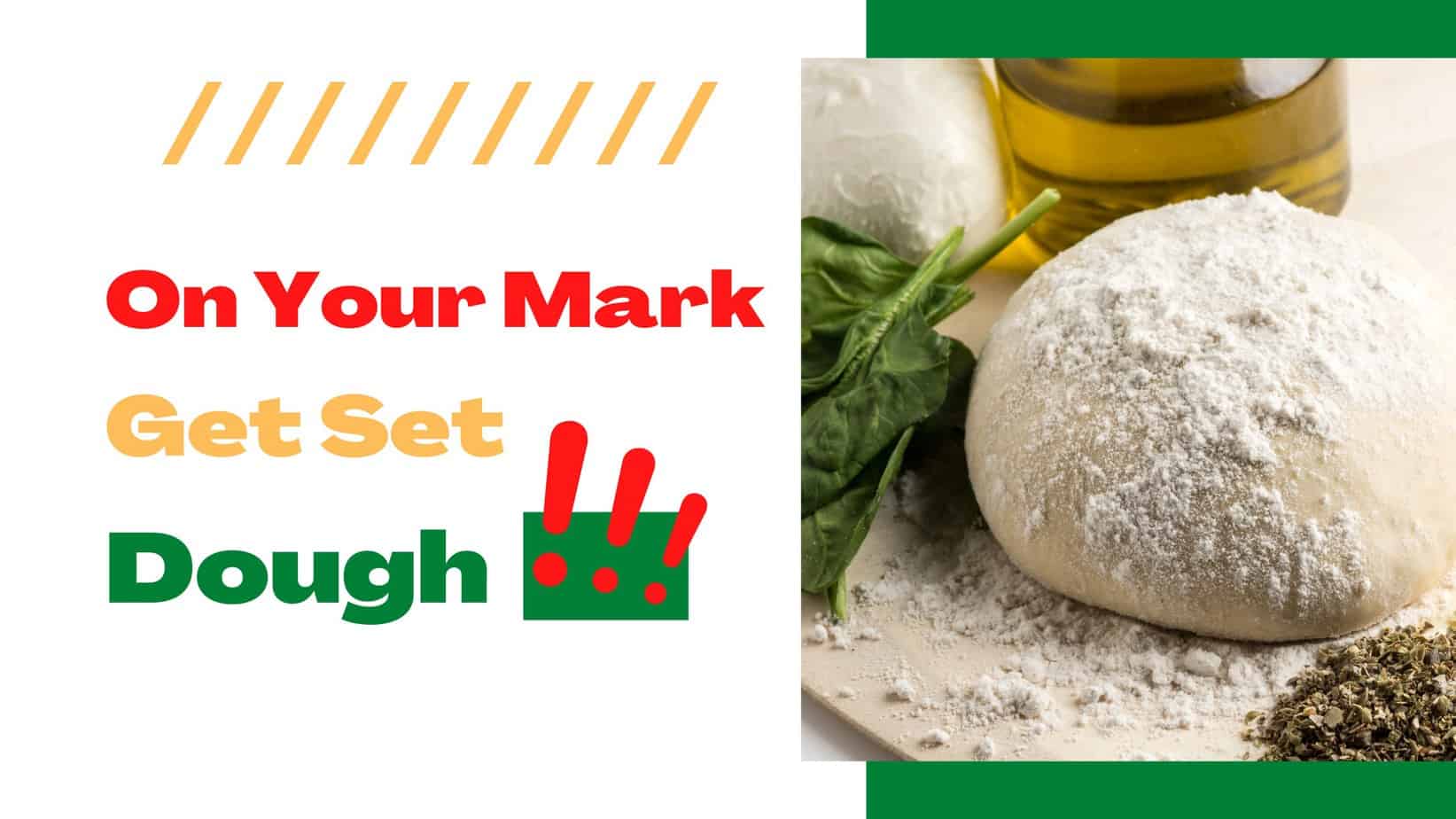
Pizza for Beginners: Don’t Buy Pizza, Make It! Here’s How to Get Started!
the PROs
You have this idea that you want to make pizza at home as opposed to ordering it, but where do you start? Don’t worry! Here you will find answers and directions to all your questions.
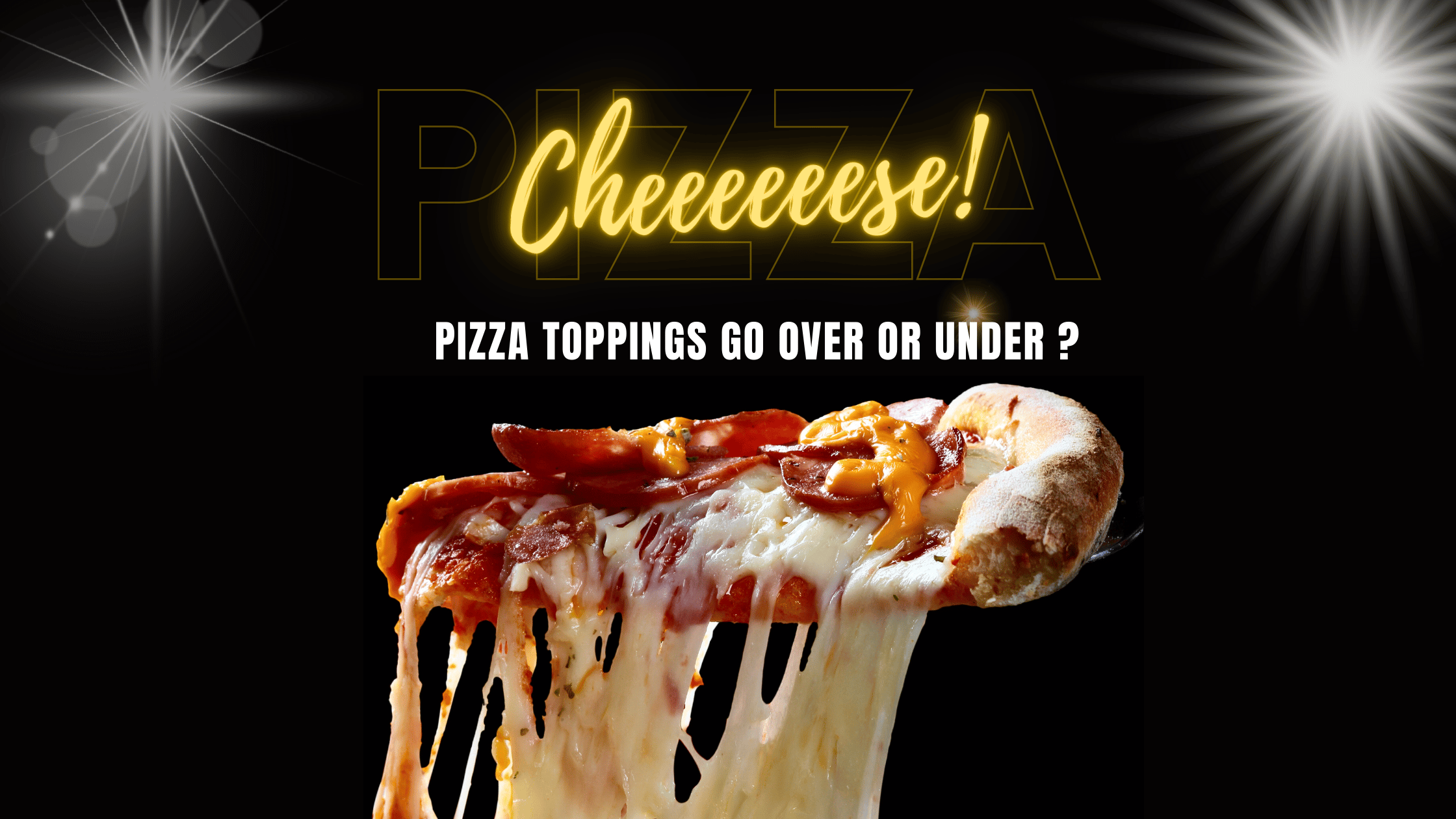
Pizza Toppings Under Cheese or Over Cheese? [Why the Order Matters]
the PROs
Is Pizza Cheese on Top or Bottom? Hey pizza lovers, are you wondering if you should layer pizza toppings under …
Newsletter
Subscribe to our Recipe of the Week newsletter and receive our partners’ latest recipes, tips, and discount offers.
Keep in Touch!
